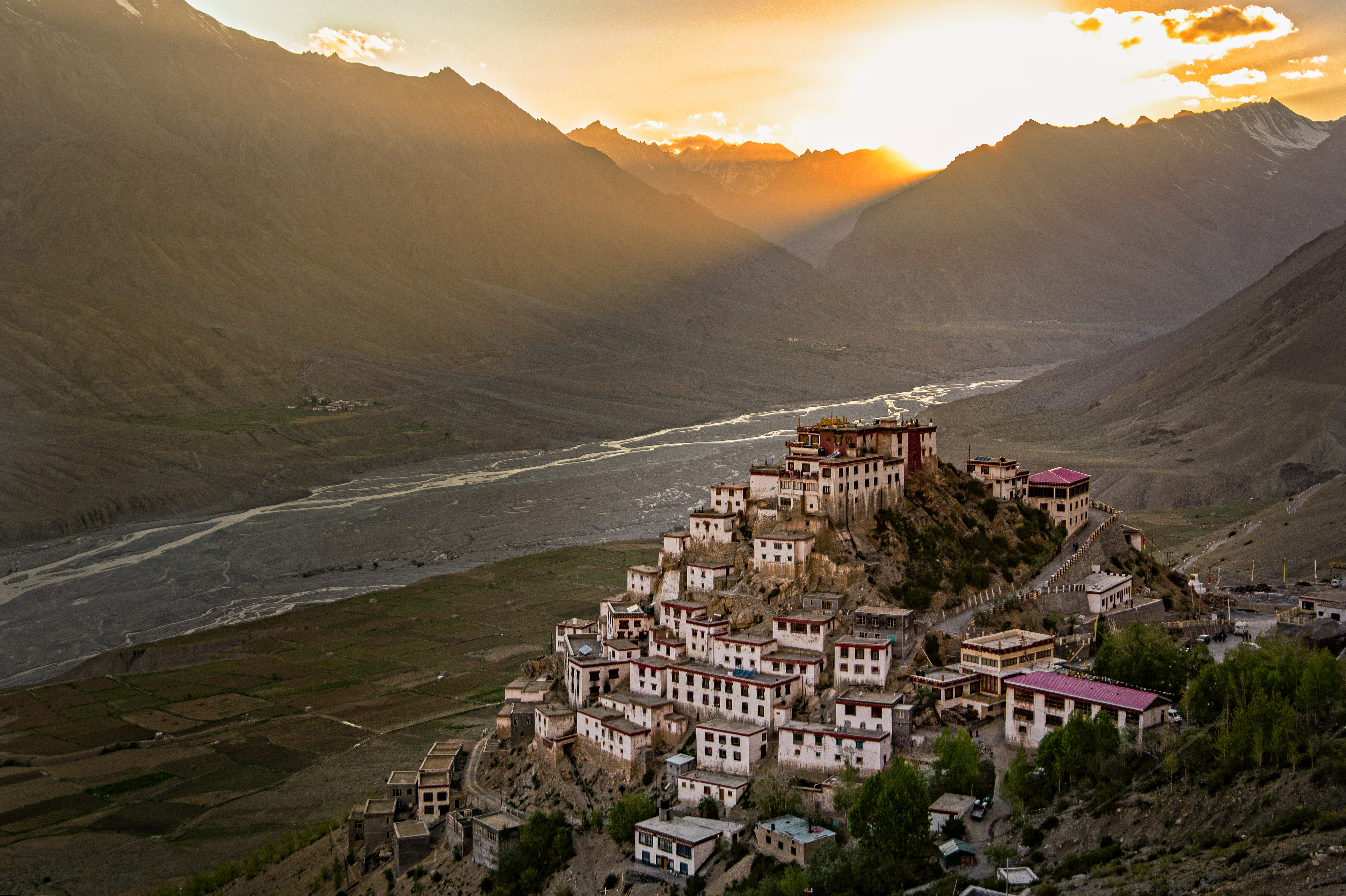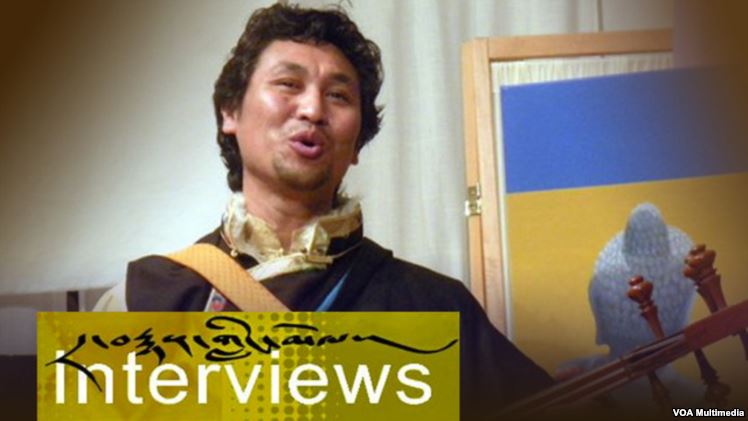|
Tibetan Institute Of Performing Arts
] The Tibetan Institute of Performing Arts (TIPA) was founded by Tenzin Gyatso, the 14th Dalai Lama on reaching McLeod Ganj, Himachal Pradesh, India in exile from Tibet in August 1959. It was then called Tibetan Music, Dance and Drama Society, which was one of the first institutes set up by the Dalai Lama, and was established to preserve Tibetan artistic heritage, especially opera, dance, and music. 'Tibetan Institute of Performing Arts'' (TIPA) has been registered as a Society under The Societies Registration Act, 1860 of the Government of India. The institute is a part of the Department of Religion and Culture of Central Tibetan Administration (CTA) and functions as a semi-autonomous body. Tibet has been celebrated as the Ocean of Songs and Dances (Glu gar gyi rgya mtsho) for hundreds of years. Dance and music have always been integral to the Tibetan culture and are considered to be one of the key components of the traditional “five minor sciences” (Rik ne Chungwa Nga). ... [...More Info...] [...Related Items...] OR: [Wikipedia] [Google] [Baidu] |
Namgyal Lhamo
Namgyal Lhamo is an internationally acclaimed Tibetan Opera, classical singer and actor. She is based in Utrecht, The Netherlands. Early life Starting at the age of eight, Lhamo, recognized by many as a child prodigy, and her sister, Kelsang Chukie Tethong, trained under great masters of Tibetan Opera and Classical Music at the Tibetan Institute of Performing Arts set up by the Dalai Lama. Lhamo trained for fourteen years. Her sister trained for eleve years as she had to earn money after their father died. Lhamo went on to become the star performer of the Institute and toured extensively. Through this passage she stepped into the tradition of the various kinds of classical and folk music of her country. Her interpretations of the Nangma and the Toeshe, Tibetan classical songs from the 17th century, have been universally acclaimed and she is popularly known as The Nightingale of Tibet. Since the 1980s, Namgyal Lhamo has lived in the Netherlands while her sister was based in In ... [...More Info...] [...Related Items...] OR: [Wikipedia] [Google] [Baidu] |
India–Tibet Relations
Tibet–India relations are said to have begun during the spread of Buddhism to Tibet from India during the 7th and 8th centuries AD. In 1959, the Dalai Lama fled to India after the failed 1959 Tibetan uprising. Since then, Tibetans-in-exile have been given asylum in India, with the Indian government accommodating them into 45 residential settlements across 10 states in the country. From around 150,000 Tibetan refugees in 2011, the number fell to 85,000 in 2018, according to government data. Many Tibetans are now leaving India to go back to Tibet and other countries such as United States or Germany. The Government of India, soon after India's independence in 1947, treated Tibet as a ''de facto'' independent country. However, more recently India's policy on Tibet has been mindful of Chinese sensibilities, and has recognized Tibet as a part of China. History Scholars like Buton Rinchen Drub (Bu-ston) have suggested that Tibetans are descendants of Rupati, a Kaurava military gen ... [...More Info...] [...Related Items...] OR: [Wikipedia] [Google] [Baidu] |
Dance Schools In India
Dance is a performing art form consisting of sequences of movement, either improvised or purposefully selected. This movement has aesthetic and often symbolic value. Dance can be categorized and described by its choreography, by its repertoire of movements, or by its historical period or place of origin. An important distinction is to be drawn between the contexts of theatrical and participatory dance, although these two categories are not always completely separate; both may have special functions, whether social, ceremonial, competitive, erotic, martial, or sacred/liturgical. Other forms of human movement are sometimes said to have a dance-like quality, including martial arts, gymnastics, cheerleading, figure skating, synchronized swimming, marching bands, and many other forms of athletics. There are many professional athletes like, professional football players and soccer players, who take dance classes to help with their skills. To be more specific professional athletes ta ... [...More Info...] [...Related Items...] OR: [Wikipedia] [Google] [Baidu] |
Arts Organizations Established In 1959
The arts are a very wide range of human practices of creative expression, storytelling and cultural participation. They encompass multiple diverse and plural modes of thinking, doing and being, in an extremely broad range of media. Both highly dynamic and a characteristically constant feature of human life, they have developed into innovative, stylized and sometimes intricate forms. This is often achieved through sustained and deliberate study, training and/or theorizing within a particular tradition, across generations and even between civilizations. The arts are a vehicle through which human beings cultivate distinct social, cultural and individual identities, while transmitting values, impressions, judgments, ideas, visions, spiritual meanings, patterns of life and experiences across time and space. Prominent examples of the arts include: * visual arts (including architecture, ceramics, drawing, filmmaking, painting, photography, and sculpting), * literary arts (includin ... [...More Info...] [...Related Items...] OR: [Wikipedia] [Google] [Baidu] |
Tibetan Buddhist Art And Culture
Tibetan may mean: * of, from, or related to Tibet * Tibetan people, an ethnic group * Tibetan language: ** Classical Tibetan, the classical language used also as a contemporary written standard ** Standard Tibetan, the most widely used spoken dialect ** Tibetan pinyin, a method of writing Standard Tibetan in Latin script ** Tibetan script ** any other of the Tibetic languages Tibetan may additionally refer to: Culture * Old Tibetan, an era of Tibetan history * Tibetan art * Music of Tibet * Tibetan rug * Tibetan culture * Tibetan cuisine Religion * Tibetan Buddhism * Tibetan Muslims Other uses * Tibetan alphabet * Tibetan (Unicode block) * Tibetan name * Tibetan calendar * Tibetan Spaniel, a breed of dog * Tibetan Mastiff, a breed of dog See also * Tibetan Bells (other) * Traditional Tibetan medicine * Tibetan language (other) Tibetan language may refer to: * Classical Tibetan, the classical language used also as a contemporary written standard * Lhasa Tib ... [...More Info...] [...Related Items...] OR: [Wikipedia] [Google] [Baidu] |
Dharamshala
Dharamshala (; also spelled Dharamsala) is the winter capital of Himachal Pradesh, India. It serves as administrative headquarters of the Kangra district after being relocated from Kangra, a city located away from Dharamshala, in 1855. The city has been selected as one of a hundred in India to be developed as a smart city under Indian Prime Minister Narendra Modi's flagship "Smart Cities Mission". On 19 January 2017, the Chief Minister of Himachal Pradesh, Virbhadra Singh, declared Dharamshala as the second capital of Himachal Pradesh, making it the third national administrative division of India to have two capitals after the state of Maharashtra and the union territory of Jammu and Kashmir. Description Dharamshala is a municipal corporation city in the upper reaches of the Kangra Valley and is surrounded by dense coniferous forest consisting mainly of stately Deodar cedar trees. The suburbs include McLeod Ganj, Bhagsunag, Dharamkot, Naddi, Forsyth Ganj, Kotwali Baz ... [...More Info...] [...Related Items...] OR: [Wikipedia] [Google] [Baidu] |
Norbulingka Institute
:''You may have been looking for Norbulingka Palace.'' Norbulingka Institute, founded in 1995 by Kelsang and Kim Yeshi at Sidhpur, near Dharamshala, India, is dedicated to the preservation of the Tibetan culture in its literary and artistic forms. Etymology The institute is named after Norbulingka, the traditional summer residence of the Dalai Lamas, in Lhasa, Tibet. The ground plan is based on the proportions of Avalokitesvara, the thousand-armed god of compassion, with the temple as the head. Overview Norbulingka is dedicated to handing down tradition and restoring standards by providing training, education and employment for Tibetans. It supports an environment in which Tibetan community and family values can flourish. It reconciles the traditional creatively and respectfully with the modern, and seeks to create an international awareness of Tibetan values and their expression in art and literature. Norbulingka produces high quality, traditionally crafted art objects, as w ... [...More Info...] [...Related Items...] OR: [Wikipedia] [Google] [Baidu] |
Tsering Dorjee
Tsering Dorjee Bawa (Tibetan: ཚེ་རིང་རྡོ་རྗེ། born April 23, 1970) is a Tibetan actor, producer, musician and dancer. He acted in several remarkable films including the Oscar nominated film ‘Himalaya' in 1999 and has created the original soundtrack with Michael Becker for 2009 Emmy Award-winning documentary ‘The Woman of Tibet - A Quiet Revolution’. He was nominated twice for outstanding featured performance in play, male for his off-Broadway show, 'The Oldest Boy'. He had worked on numerous ensemble art works with many renown world artists. He currently resides in Bay Area, California and teaches Tibetan music, conducts art workshops for the university students and professionals and takes acting assignments. Early life Tsering Dorjee was born in Toe Bawa in Ngari, Western Tibet. In 1986, he enrolled in the Tibetan Institute of Performing Arts, Dharamshala, India at the age of 16 to pursue his love for art and music. Graduating from the art ... [...More Info...] [...Related Items...] OR: [Wikipedia] [Google] [Baidu] |
Tsering Wangyal
Tsering Wangyal (March 6, 1949 - November 24, 2000) simply known as “Editor”, was the editor of the ''Tibetan Review'' for 20 years. Early life Tsering Wangyal was born on March 6, 1949. He studied history at the University of Bristol, England. Career In 1970, after completing his studies he came back from England and served in the Tibetan government in exile in Dharamshala, India. Mr Wangyal was appointed the editor of the Tibetan Review in 1976 after Dawa Norbu left to pursue his further studies to University of California, Berkeley in the United States. He remained the editor of Tibetan Review until his resignation in September 1996 and left for Canada. He was succeeded by Mr Pema Thinley, who is the present editor of the Tibetan Review. He has also contributed his writings to various magazine and books. The Editor Tsering Wangyal was known for his wit and humour and his editorial. He has written against the Tibetan government's ineffectiveness and Chinese go ... [...More Info...] [...Related Items...] OR: [Wikipedia] [Google] [Baidu] |
Jamyang Norbu
Jamyang Norbu ( Tibetan: འཇམ་དབྱངས་ནོར་བུ་, Wylie: 'jam-dbyangs nor-bu) is a Tibetan political activist and writer, currently living in the United States, having previously lived for over 40 years as a Tibetan exile in India. Biography Norbu attended St. Joseph's School in Darjeeling, India. As a teenager, he dropped out of school and ran away from home to join the Tibetan guerrilla group Chushi Gangdruk, which operated from Mustang in Nepal. He was the creator of Tibetans-in-exile taxation system, or the Green Book, which has helped fund the exile government since 1972. Later he founded and directed the Amnye Machen Institute, Tibetan Centre for Advanced Studies, in Dharamsala. Politics Jamyang Norbu has been called a "radical Tibetan separatist" by the '' People's Daily.'' His advocacy for complete Tibetan independence and criticism of the nonviolent "Middle Way" autonomy plan of the Central Tibetan Administration has led him to push f ... [...More Info...] [...Related Items...] OR: [Wikipedia] [Google] [Baidu] |







